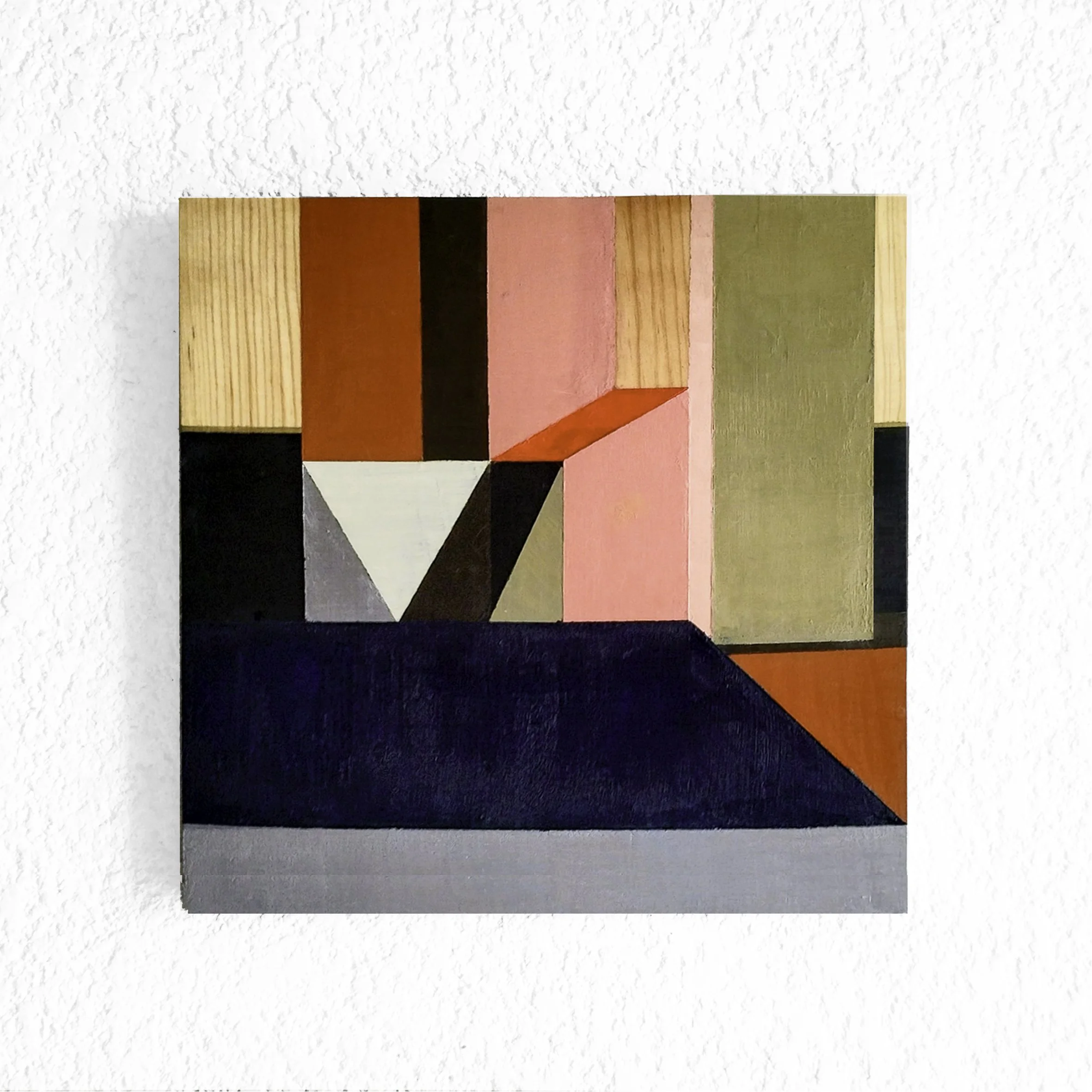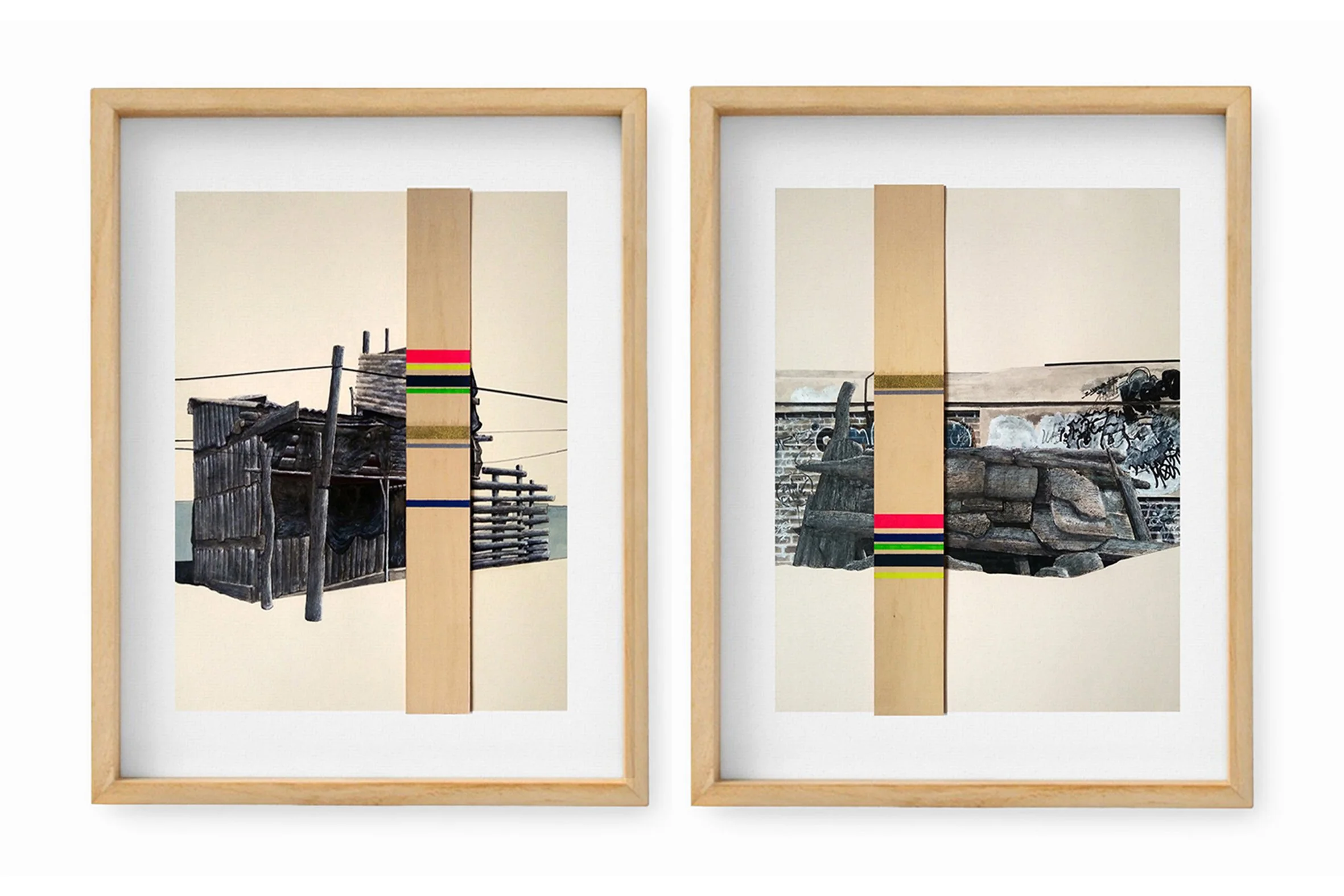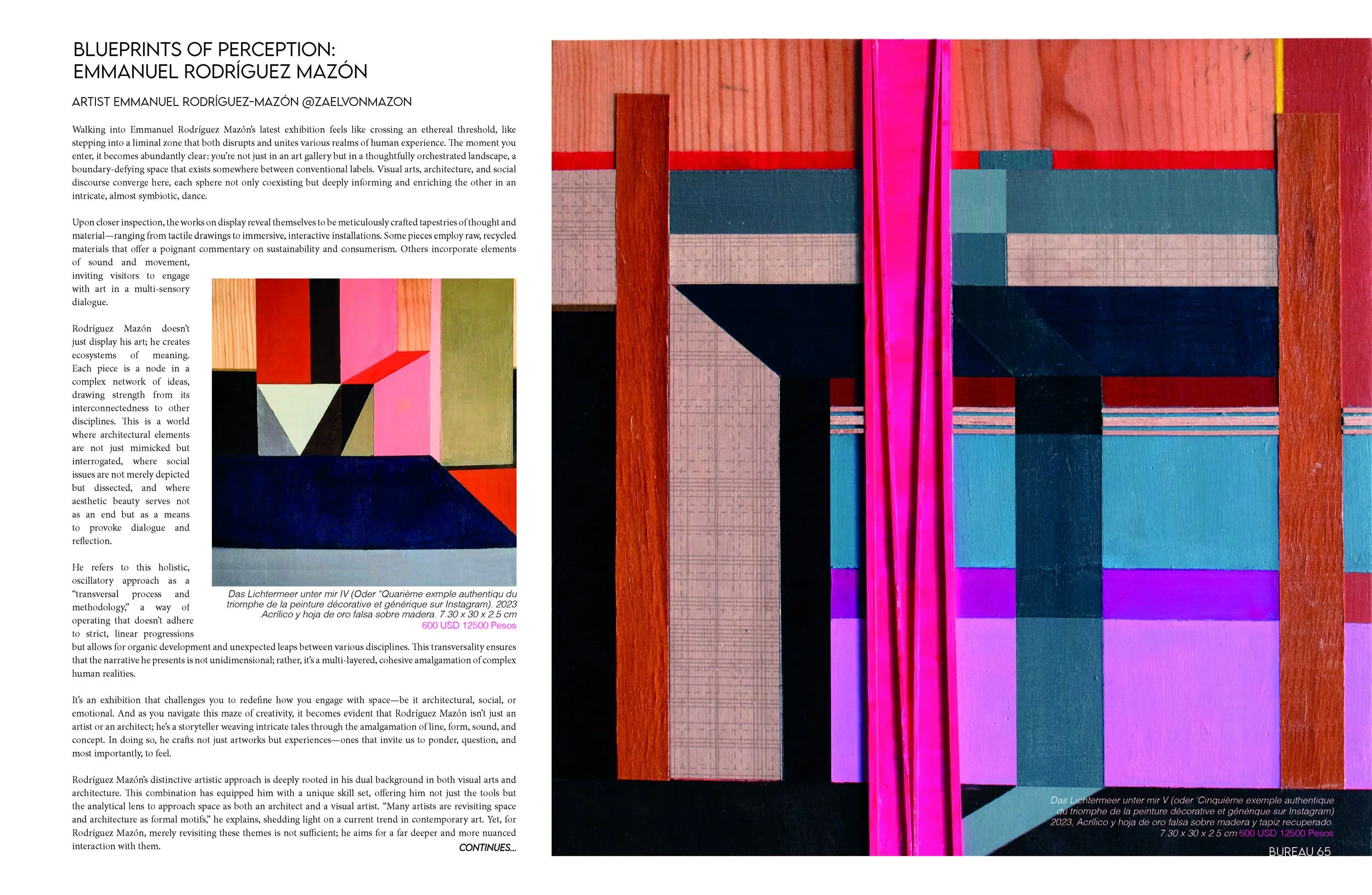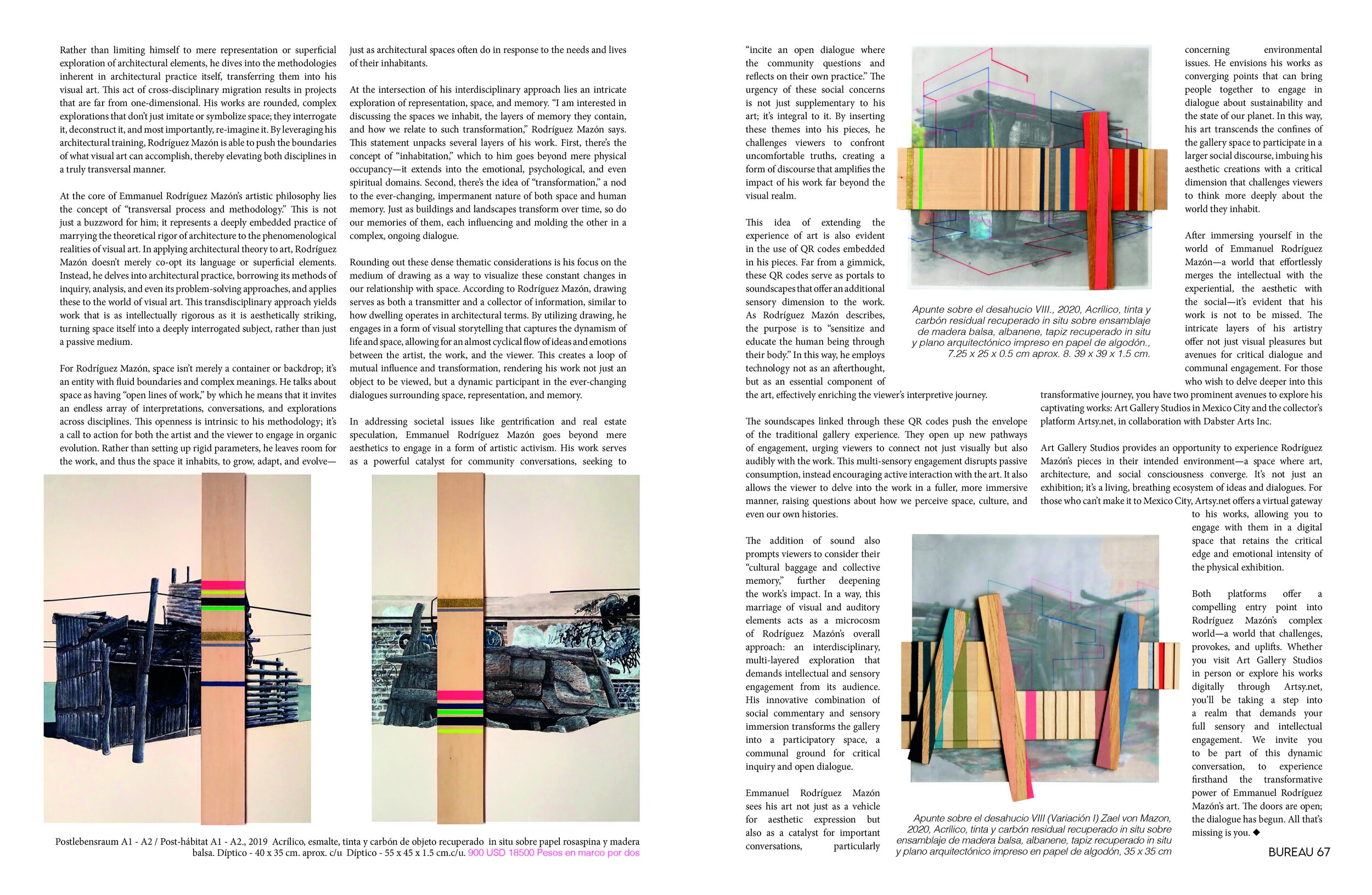Supporting Queer Art has never been so easy.
Let the highest bid WIN!
ISupport the vibrant future of queer art! By placing a high bid, you're directly contributing to The Bureau of Queer Art's community exhibitions, publications, residencies, and cross-border projects that build and enrich our community. Remember, winning a bid is a commitment—payment must be made via a secure PayPal invoice, which can be completed using bank or credit card information within five business days. Artwork will be available for pickup from Dama Gallery in Ventura, CA, or shipped on June 2nd, 2024 at the cost of bid winner. Your generous support enables us to continue making a meaningful impact. Bid generously and support passionately!
(View Auction Item and other artworks available outside auction below - All work is unframed)
AUCTION ITEM
Flüstern unter dem Laub (Whispers under the foliage).
Dibujo | Carboncillo sobre papel.
Díptico - 26 x 38 cm c/u.
2018
$950 USD Estimated Value
Starting bid $74 USD
Das Lichtermeer unter mir IV (Oder “Quarième exmple authentiqu du triomphe de la peinture décorative et générique sur Instagram). 2023 .Acrílico y hoja de oro falsa sobre madera. 7.30 x 30 x 2.5 cm
600 USD 12500 Pesos
Das Lichtermeer unter mir V (oder ‘Cinquième exemple authentique du triomphe de la peinture décorative et générique sur Instagram) 2023, Acrílico y hoja de oro falsa sobre madera y tapiz recuperado. 7.30 x 30 x 2.5 cm 600 USD 12500 Pesos
Postlebensraum A1 - A2 / Post-hábitat A1 - A2., 2019 Acrílico, esmalte, tinta y carbón de objeto recuperado in situ sobre papel rosaspina y madera balsa. Díptico - 40 x 35 cm. aprox. c/u Díptico - 55 x 45 x 1.5 cm.c/u. 900 USD 18500 Pesos en marco por dos
PLANOS DE LA PERCEPCiÓN: LOS REiNOS ARTÍSTiCOS DE EMMANUEL RODRÍGUEZ MAZÓN
ARTiST EMMANUEL RODRÍGUEZ-MAZÓN @ZAELVONMAZON
Al entrar en la última exposición de Emmanuel Rodríguez Mazón, se siente como cruzar un umbral etéreo, como entrar en una zona liminal que tanto interrumpe como une diversos ámbitos de la experiencia humana. En el momento en que entras, queda abundantemente claro: no estás solo en una galería de arte, sino en un paisaje cuidadosamente orquestado, un espacio que desafía límites y que existe en algún lugar entre las etiquetas convencionales. Las artes visuales, la arquitectura y el discurso social convergen aquí, cada esfera no sólo coexistiendo sino también informando y enriqueciendo profundamente a las otras en una danza casi simbiótica.
Al observar más de cerca, las obras en exhibición se revelan como tapices meticulosamente elaborados de pensamiento y material, que van desde dibujos táctiles hasta instalaciones inmersivas e interactivas. Algunas piezas emplean materiales crudos y reciclados que ofrecen un comentario conmovedor sobre la sostenibilidad y el consumismo. Otras incorporan elementos de sonido y movimiento, invitando a los visitantes a interactuar con el arte en un diálogo multisensorial.
Rodríguez Mazón no solo muestra su arte; crea ecosistemas de significado. Cada pieza es un nodo en una red compleja de ideas, obteniendo su fuerza de su interconexión con otras disciplinas. Este es un mundo donde los elementos arquitectónicos no solo se imitan sino que se interrogan, donde los problemas sociales no se representan simplemente sino que se diseccionan, y donde la belleza estética no sirve como un fin sino como un medio para provocar diálogo y reflexión.
Él se refiere a este enfoque holístico y oscilatorio como un “proceso y metodología transversales,” una forma de operar que no se adhiere a progresiones lineales estrictas sino que permite el desarrollo orgánico y saltos inesperados entre varias disciplinas. Esta transversalidad asegura que la narrativa que presenta no es unidimensional; más bien, es una amalgama cohesiva y multicapa de realidades humanas complejas.
Es una exposición que te desafía a redefinir cómo interactúas con el espacio, ya sea arquitectónico, social o emocional. Y mientras navegas por este laberinto de creatividad, se hace evidente que Rodríguez Mazón no es solo un artista o un arquitecto; es un narrador que teje cuentos intrincados a través de la amalgama de línea, forma, sonido y concepto. Al hacerlo, no sólo crea obras de arte, sino experiencias que nos invitan a reflexionar, cuestionar y, lo más importante, a sentir.
La distintiva aproximación artística de Rodríguez Mazón está profundamente arraigada en su doble formación tanto en artes visuales como en arquitectura. Esta combinación lo ha dotado de un conjunto de habilidades único, ofreciéndole no solo las herramientas sino la lente analítica para abordar el espacio tanto como arquitecto como artista visual. “Muchos artistas están revisando el espacio y la arquitectura como motivos formales”, explica, arrojando luz sobre una tendencia actual en el arte contemporáneo. Sin embargo, para Rodríguez Mazón, simplemente volver a visitar estos temas no es suficiente; su objetivo es una interacción mucho más profunda y matizada con ellos.
En lugar de limitarse a la mera representación o exploración superficial de elementos arquitectónicos, se sumerge en las metodologías inherentes a la práctica arquitectónica en sí, trasladándolas a su arte visual. Este acto de migración interdisciplinaria da como resultado proyectos que están lejos de ser unidimensionales. Sus obras son exploraciones redondas y complejas que no solo imitan o simbolizan el espacio; lo interrogan, lo deconstruyen y, lo más importante, lo reimaginan. Al aprovechar su formación arquitectónica, Rodríguez Mazón es capaz de ampliar los límites de lo que el arte visual puede lograr, elevando ambas disciplinas de una manera verdaderamente transversal.
En el núcleo de la filosofía artística de Emmanuel Rodríguez Mazón yace el concepto de “proceso y metodología transversales”. Esto no es solo una palabra de moda para él; representa una práctica profundamente arraigada de unir el rigor teórico de la arquitectura con las realidades fenomenológicas del arte visual. Al aplicar la teoría arquitectónica al arte, Rodríguez Mazón no simplemente coopta su lenguaje o elementos superficiales. En cambio, se sumerge en la práctica arquitectónica, tomando sus métodos de investigación, análisis e incluso sus enfoques de resolución de problemas, y los aplica al mundo del arte visual. Este enfoque transdisciplinario produce un trabajo que es tan intelectualmente riguroso como estéticamente impactante, convirtiendo al espacio mismo en un sujeto profundamente interrogado, en lugar de solo un medio pasivo.
Para Rodríguez Mazón, el espacio no es simplemente un contenedor o telón de fondo; es una entidad con límites fluidos y significados complejos. Habla del espacio como teniendo “líneas de trabajo abiertas”, por lo que significa que invita a un sinfín de interpretaciones, conversaciones y exploraciones entre disciplinas. Esta apertura es intrínseca a su metodología; es una llamada a la acción tanto para el artista como para el espectador para participar en una evolución orgánica. En lugar de establecer parámetros rígidos, deja espacio para que la obra, y por lo tanto el espacio que habita, crezca, se adapte y evolucione, tal como los espacios arquitectónicos a menudo lo hacen en respuesta a las necesidades y vidas de sus habitantes.
En la intersección de su enfoque interdisciplinario se encuentra una exploración intrincada de la representación, el espacio y la memoria. “Me interesa discutir los espacios que habitamos, las capas de memoria que contienen y cómo nos relacionamos con esa transformación”, dice Rodríguez Mazón. Esta declaración desempaqueta varias capas de su trabajo. Primero, está el concepto de “habitación”, que para él va más allá de la mera ocupación física y entra en el ámbito de la habitación emocional e incluso psicológica. Luego, hay “memoria”, un término que él emplea para referirse a las múltiples vidas, experiencias y significados que un espacio puede contener, y cómo estos interactúan con nuestro propio sentido de identidad y pertenencia.
Es esta interacción compleja entre los espacios que habitamos y las memorias que contienen lo que motiva a Rodríguez Mazón. En su obra, se esfuerza por abordar los efectos a menudo invisibles pero palpables que los espacios tienen en nuestras vidas y cómo estos espacios se convierten en extensión de nosotros mismos. “Un espacio es tanto un retrato de su habitante como el habitante es un retrato del espacio”, concluye.
Rodríguez Mazón está decidido a desafiar y expandir nuestras nociones preconcebidas de lo que significa habitar un espacio, y en el proceso, está redefiniendo los límites de su arte. Su práctica transversal se convierte en un campo de juego expansivo donde las disciplinas pueden entrelazarse y enriquecerse mutuamente, y donde las categorías tradicionales de arte y arquitectura pueden desafiar sus propias limitaciones. Este espíritu de curiosidad y exploración lo ha llevado a crear un cuerpo de trabajo que es tanto una exploración del espacio como un cuestionamiento profundo de nuestras interacciones con él.
Para aquellos que buscan no solo apreciar el arte sino también dialogar con él, la obra de Emmanuel Rodríguez Mazón ofrece una oportunidad única para sumergirse en un espacio donde las fronteras se diluyen y las posibilidades son infinitas.
BLUEPRiNTS OF PERCEPTiON: EMMANUEL RODRÍGUEZ MAZÓN
ARTiST EMMANUEL RODRÍGUEZ-MAZÓN @ZAELVONMAZON
Walking into Emmanuel Rodríguez Mazón’s latest exhibition feels like crossing an ethereal threshold, like stepping into a liminal zone that both disrupts and unites various realms of human experience. The moment you enter, it becomes abundantly clear: you’re not just in an art gallery but in a thoughtfully orchestrated landscape, a boundary-defying space that exists somewhere between conventional labels. Visual arts, architecture, and social discourse converge here, each sphere not only coexisting but deeply informing and enriching the other in an intricate, almost symbiotic, dance.
Upon closer inspection, the works on display reveal themselves to be meticulously crafted tapestries of thought and material—ranging from tactile drawings to immersive, interactive installations. Some pieces employ raw, recycled materials that offer a poignant commentary on sustainability and consumerism. Others incorporate elements of sound and movement, inviting visitors to engage with art in a multi-sensory dialogue.
Rodríguez Mazón doesn’t just display his art; he creates ecosystems of meaning. Each piece is a node in a complex network of ideas, drawing strength from its interconnectedness to other disciplines. This is a world where architectural elements are not just mimicked but interrogated, where social issues are not merely depicted but dissected, and where aesthetic beauty serves not as an end but as a means to provoke dialogue and reflection.
He refers to this holistic, oscillatory approach as a “transversal process and methodology,” a way of operating that doesn’t adhere to strict, linear progressions but allows for organic development and unexpected leaps between various disciplines. This transversality ensures that the narrative he presents is not unidimensional; rather, it’s a multi-layered, cohesive amalgamation of complex human realities.
It’s an exhibition that challenges you to redefine how you engage with space—be it architectural, social, or emotional. And as you navigate this maze of creativity, it becomes evident that Rodríguez Mazón isn’t just an artist or an architect; he’s a storyteller weaving intricate tales through the amalgamation of line, form, sound, and concept. In doing so, he crafts not just artworks but experiences—ones that invite us to ponder, question, and most importantly, to feel.
Rodríguez Mazón’s distinctive artistic approach is deeply rooted in his dual background in both visual arts and architecture. This combination has equipped him with a unique skill set, offering him not just the tools but the analytical lens to approach space as both an architect and a visual artist. “Many artists are revisiting space and architecture as formal motifs,” he explains, shedding light on a current trend in contemporary art. Yet, for Rodríguez Mazón, merely revisiting these themes is not sufficient; he aims for a far deeper and more nuanced interaction with them.
Rather than limiting himself to mere representation or superficial exploration of architectural elements, he dives into the methodologies inherent in architectural practice itself, transferring them into his visual art. This act of cross-disciplinary migration results in projects that are far from one-dimensional. His works are rounded, complex explorations that don’t just imitate or symbolize space; they interrogate it, deconstruct it, and most importantly, re-imagine it. By leveraging his architectural training, Rodríguez Mazón is able to push the boundaries of what visual art can accomplish, thereby elevating both disciplines in a truly transversal manner.
At the core of Emmanuel Rodríguez Mazón’s artistic philosophy lies the concept of “transversal process and methodology.” This is not just a buzzword for him; it represents a deeply embedded practice of marrying the theoretical rigor of architecture to the phenomenological realities of visual art. In applying architectural theory to art, Rodríguez Mazón doesn’t merely co-opt its language or superficial elements. Instead, he delves into architectural practice, borrowing its methods of inquiry, analysis, and even its problem-solving approaches, and applies these to the world of visual art. This transdisciplinary approach yields work that is as intellectually rigorous as it is aesthetically striking, turning space itself into a deeply interrogated subject, rather than just a passive medium.
For Rodríguez Mazón, space isn’t merely a container or backdrop; it’s an entity with fluid boundaries and complex meanings. He talks about space as having “open lines of work,” by which he means that it invites an endless array of interpretations, conversations, and explorations across disciplines. This openness is intrinsic to his methodology; it’s a call to action for both the artist and the viewer to engage in organic evolution. Rather than setting up rigid parameters, he leaves room for the work, and thus the space it inhabits, to grow, adapt, and evolve—just as architectural spaces often do in response to the needs and lives of their inhabitants.
At the intersection of his interdisciplinary approach lies an intricate exploration of representation, space, and memory. “I am interested in discussing the spaces we inhabit, the layers of memory they contain, and how we relate to such transformation,” Rodríguez Mazón says. This statement unpacks several layers of his work. First, there’s the concept of “inhabitation,” which to him goes beyond mere physical occupancy—it extends into the emotional, psychological, and even spiritual domains. Second, there’s the idea of “transformation,” a nod to the ever-changing, impermanent nature of both space and human memory. Just as buildings and landscapes transform over time, so do our memories of them, each influencing and molding the other in a complex, ongoing dialogue.
Rounding out these dense thematic considerations is his focus on the medium of drawing as a way to visualize these constant changes in our relationship with space. According to Rodríguez Mazón, drawing serves as both a transmitter and a collector of information, similar to how dwelling operates in architectural terms. By utilizing drawing, he engages in a form of visual storytelling that captures the dynamism of life and space, allowing for an almost cyclical flow of ideas and emotions between the artist, the work, and the viewer. This creates a loop of mutual influence and transformation, rendering his work not just an object to be viewed, but a dynamic participant in the ever-changing dialogues surrounding space, representation, and memory.
In addressing societal issues like gentrification and real estate speculation, Emmanuel Rodríguez Mazón goes beyond mere aesthetics to engage in a form of artistic activism. His work serves as a powerful catalyst for community conversations, seeking to “incite an open dialogue where the community questions and reflects on their own practice.” The urgency of these social concerns is not just supplementary to his art; it’s integral to it. By inserting these themes into his pieces, he challenges viewers to confront uncomfortable truths, creating a form of discourse that amplifies the impact of his work far beyond the visual realm.
This idea of extending the experience of art is also evident in the use of QR codes embedded in his pieces. Far from a gimmick, these QR codes serve as portals to soundscapes that offer an additional sensory dimension to the work. As Rodríguez Mazón describes, the purpose is to “sensitize and educate the human being through their body.” In this way, he employs technology not as an afterthought, but as an essential component of the art, effectively enriching the viewer’s interpretive journey.
The soundscapes linked through these QR codes push the envelope of the traditional gallery experience. They open up new pathways of engagement, urging viewers to connect not just visually but also audibly with the work. This multi-sensory engagement disrupts passive consumption, instead encouraging active interaction with the art. It also allows the viewer to delve into the work in a fuller, more immersive manner, raising questions about how we perceive space, culture, and even our own histories.
The addition of sound also prompts viewers to consider their “cultural baggage and collective memory,” further deepening the work’s impact. In a way, this marriage of visual and auditory elements acts as a microcosm of Rodríguez Mazón’s overall approach: an interdisciplinary, multi-layered exploration that demands intellectual and sensory engagement from its audience. His innovative combination of social commentary and sensory immersion transforms the gallery into a participatory space, a communal ground for critical inquiry and open dialogue.
Emmanuel Rodríguez Mazón sees his art not just as a vehicle for aesthetic expression but also as a catalyst for important conversations, particularly concerning environmental issues. He envisions his works as converging points that can bring people together to engage in dialogue about sustainability and the state of our planet. In this way, his art transcends the confines of the gallery space to participate in a larger social discourse, imbuing his aesthetic creations with a critical dimension that challenges viewers to think more deeply about the world they inhabit.
After immersing yourself in the world of Emmanuel Rodríguez Mazón—a world that effortlessly merges the intellectual with the experiential, the aesthetic with the social—it’s evident that his work is not to be missed. The intricate layers of his artistry offer not just visual pleasures but avenues for critical dialogue and communal engagement. For those who wish to delve deeper into this transformative journey, you have two prominent avenues to explore his captivating works: Art Gallery Studios in Mexico City and the collector’s platform Artsy.net, in collaboration with Dabster Arts Inc.
Art Gallery Studios provides an opportunity to experience Rodríguez Mazón’s pieces in their intended environment—a space where art, architecture, and social consciousness converge. It’s not just an exhibition; it’s a living, breathing ecosystem of ideas and dialogues. For those who can’t make it to Mexico City, Artsy.net offers a virtual gateway to his works, allowing you to engage with them in a digital space that retains the critical edge and emotional intensity of the physical exhibition.
Both platforms offer a compelling entry point into Rodríguez Mazón’s complex world—a world that challenges, provokes, and uplifts. Whether you visit Art Gallery Studios in person or explore his works digitally through Artsy.net, you’ll be taking a step into a realm that demands your full sensory and intellectual engagement. We invite you to be part of this dynamic conversation, to experience firsthand the transformative power of Emmanuel Rodríguez Mazón’s art. The doors are open; the dialogue has begun. All that’s missing is you.






